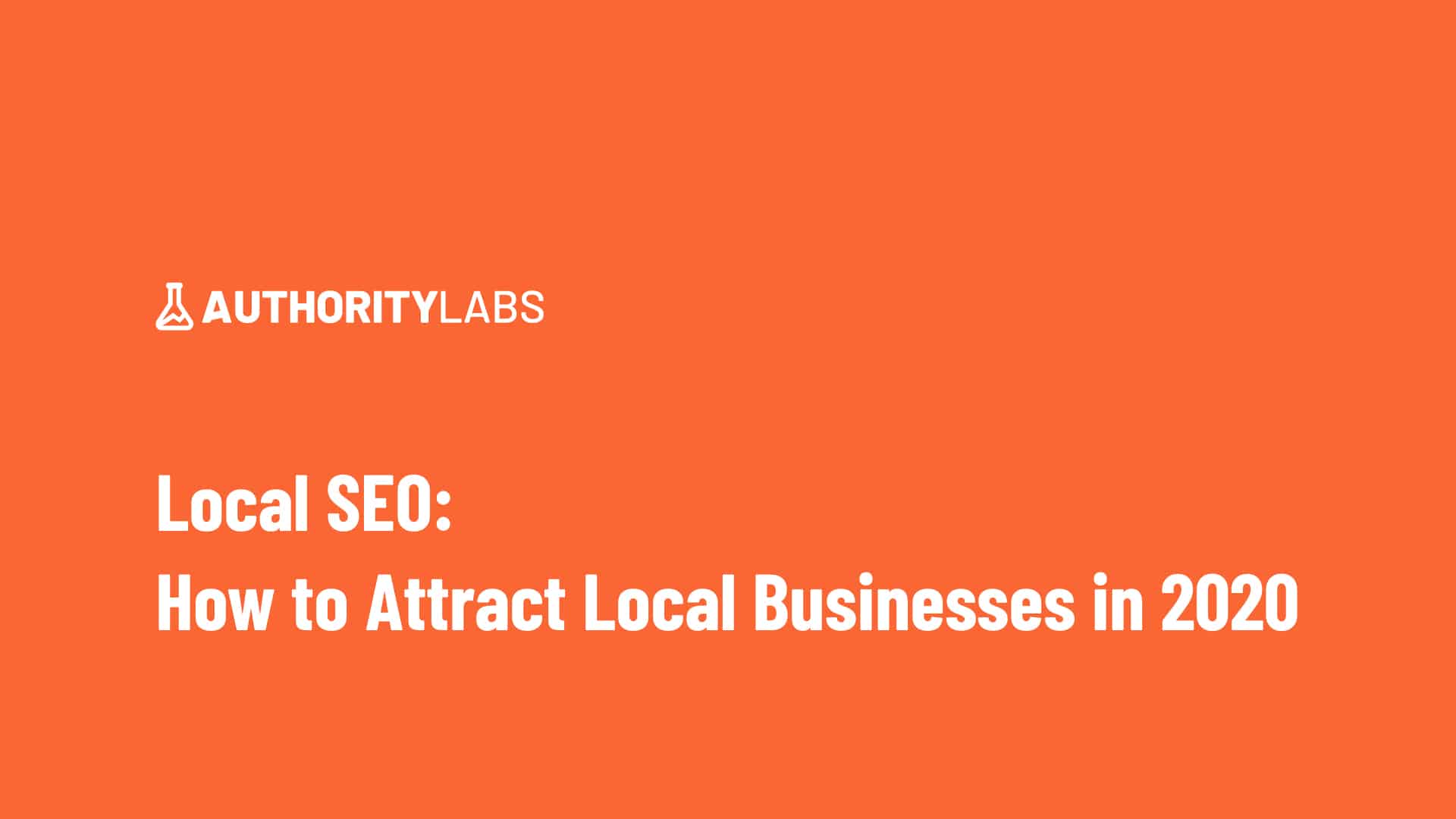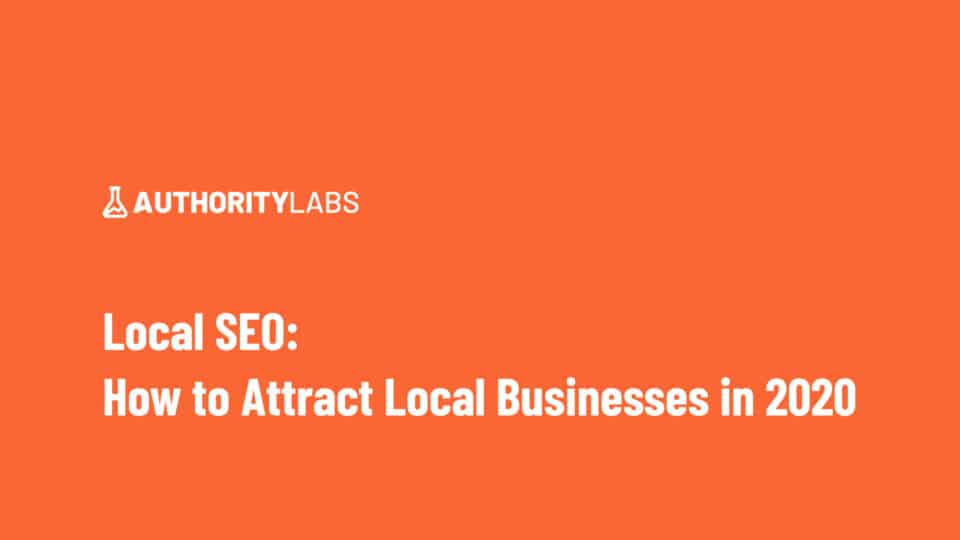Due to the amount of data at our fingertips, these days searchers are looking for local business information in a more unique way than ever before. That means SEO’s have to up their game and change the way they rank businesses locally.
To help piece together the local puzzle, Local SEO experts Greg Gifford, Darren Shaw, and Kelcey Drapp shared how they attract local customers to sites in our latest webinar.
If you’re a local business or an SEO trying to put the pieces together, watch the webinar below and learn how you can properly rank local businesses in 2020
To make sure we fully covered the bases of local SEO, we also reached out to experts Blake Denman and Brian Barwig to weigh in on the subject. See what tips they have to share about local SEO below.
In terms of site structure, how should a site be best set up to rank internationally? What are some of the fundamentals the site needs to have?
Blake Denman
There are 2 different types of local search rankings, traditional localized organic search and Google Maps. For localized organic search, traditional SEO is going to work, like on-site SEO, links, content, structured data, site speed, etc. The other factor that can influence these rankings are reviews (not just from Google My Business).
For Google Maps, unfortunately, keywords in the business name are going to trump almost every other ranking factor. If your LEGAL business name contains your city name or a keyword, then you have an advantage against your competitors.
If you add a modifier or change your business name to include a keyword or city name, you are not abiding by Google My Business guidelines and your listing can get suspended. Outside of keywords in your business name, reviews are going to really help or hurt your Google Maps rankings.
It’s not just the quantity of reviews you have but the content that is being said in those reviews. 1 positive, thorough review that naturally includes keywords is better than 5 positive reviews with little to no content. Making sure your Google My Business listing is completely filled out can also help with map rankings. Making sure you use the correct primary category and additional categories are foundational.
Having 3-5 additional categories, as long as they are relevant to your business, is fine and won’t dilute your rankings. Don’t know what primary category to use? Do a search for your most competitive keyword on Google and look at the category being used in those 3 Google Map results (next to reviews). Don’t sleep on great photos and videos, these can really help not only your rankings but can help drive new business.
After you’ve finished with your Google My Business listing and have a review building strategy in place, traditional ranking signals like on-page SEO, links, content, structured data, site speed, etc. are going to help, too. The other factor that might have some impact on rankings are citations (local listings). We take care of primary data aggregators and ~40 other top citation sources.
Outside of those, we look at what third-party sites are ranking for a client’s keywords and make sure we’re trying to build reviews to those/that site as well.For Google Maps, unfortunately, keywords in the business name are going to trump almost every other ranking factor.
Brian Barwig
The 3 main drivers of local rankings today are proximity to the location, relevance, and prominence.
This means, the more a business’s content and GMB information lines up with what the search intent is, the more likely they are going to show in the Local Pack. Beyond those 3 factors, there are several items which can contribute to improving those factors.
These are creating local content, building local links, attaining reviews, and being certain to fully optimize all aspects of the Google My Business listing. The Local SEO algorithm is different than the traditional Google algo, though it has similarities, notably creating good, relevant content, and attaining links.
How do you assess what a site needs based on the country or location it’s targeting?
Blake Denman
With the type of businesses we work with, we don’t really focus on this area, yet. The only thing I can mention is when we write content for clients, we keep it conversational. If we were to read the content out loud, does it sound like a natural conversation? If not, it needs to be redone.
Brian Barwig
The impact of Voice Search is being overblown in my opinion. Create good, relevant content for your visitors, build good, local links and potential customers will be able to find your website.
What are some of your favorite content strategies to help rank a site internationally?
Blake Denman
If the business ACTUALLY has a physical location in each location they want to rank on Google Maps with, then they should have the physical location listed on Google My Business. It makes sense to have 1 listing in certain edge cases such as; If the single listing ranks prominently in the other locations due to little to no competition and that listing has a good number of reviews, then that would be the only scenario I would recommend 1 listing.
If it’s a physical storefront (retail), you will always want a listing for each physical location.
Brian Barwig
I think it is always a good idea to have a listing for each location in which you operate, as long as you have an employee staffed at the location as well. If the location is not staffed, this goes against Googles Guidelines.
A business has a much better opportunity to rank in the Local Pack and Local Organic if they create pages on their website for each city. In addition, creating a GMB profile for each location will add more signals to Google that the location is real, thus giving the business a better opportunity to rank.
Create relevant city content for each page and for each location. If the business can attain links to the page and reviews to the GMB listing, even better.
How do you develop domain authority and trust when you’re trying to reach several different locations?
Blake Denman
In Google Maps, that’s going to be contingent on a lot of different things happening at once and is only likely to happen if there is little to no competition. For local organic search, write content about those other locations, create local pages for those cities. Become a hub or resources for those locations.
Don’t use the same content on these pages, they need to be unique and not doorway pages. It takes some work but it works pretty well if done correctly.
Brian Barwig
This is a more difficult question to ask as there hasn’t been much published data or studies on this topic from what I have seen. If possible, and the business has locations in the cities, create a GMB profile and location pages on the website.
Build local, relevant links to the location pages on the business website (sponsored links are good for this). If the business does not have physical locations in other cities they want to rank in, create unique city/location/landing pages fore each city they want to rank in. Build local, relevant links to those pages.
I did some research and wrote about this about a year ago (https://www.integratedigitalmarketing.com/how-to-rank-local-pack-your-entire-city/ ).
The Contributors

Blake Denman
President & Founder RicketyRoo Inc
Creator, Very Good Local SEO
Blake Denman is the President & Founder of RicketyRoo Inc and Creator of Very Good Local SEO. Blake has more than 13 years of local SEO experience, speaks at digital marketing conferences about local search, is a contributor to the Moz Local Search Ranking Factors Surve, and is overall an ok person. He’s also pretty bad at writing bios about himself :).

Brian Barwig
Local SEO
Brian has been in the Local SEO game for over a decade. He helps all sorts of small businesses gain traction in Local and has extensive experience with law firm SEO and insurance agents.

